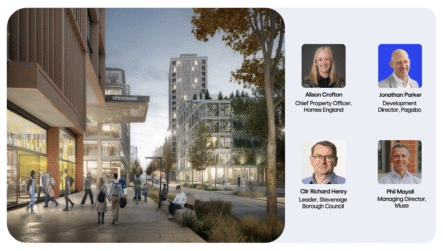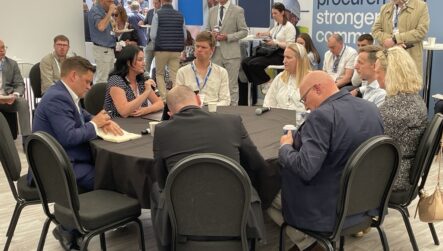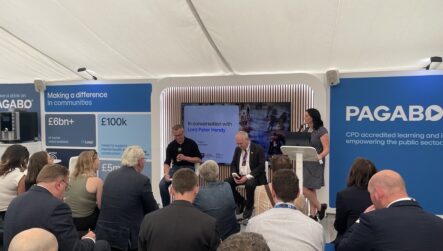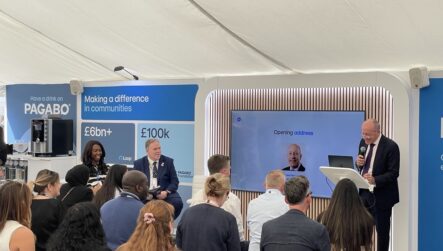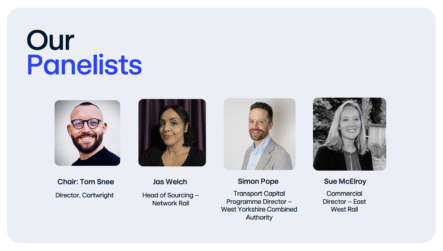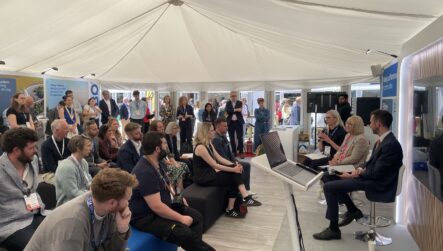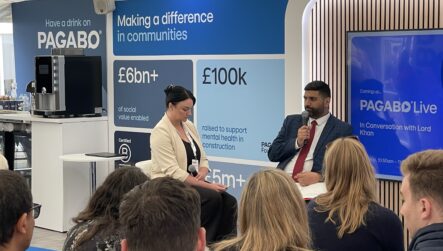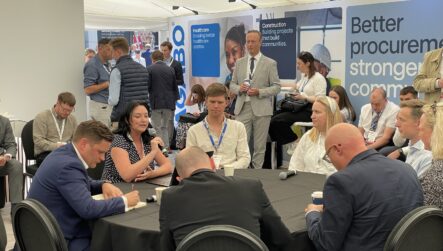
After hosting our last Pagabo Live in-person at UKREiiF, for this episode we returned to back to our usual format of a Q+A style webinar as we discussed the future of social value in the public sector.
To get a mixture of responses from all sides of the sector, our panel included Rhiannon Kilgariff, Social Value Strategic Manager at ISG, Fozia Parveen, Head of Social Value & Enterprise at Overbury, Suzanne Graham, Director at Turner & Townsend and Will Campbell, Social value Engagement Lead at Loop, all hosted by Tom Snee of Cartwright Communications.

At the end of our session, a huge 99% of attendees felt they had a good or very good understanding of what social value incorporates, showcasing the effectiveness of these open conversations and sharing different perspectives from across the sector.
This builds from what was a good baseline level of knowledge at the outset of the session, with only 29% of viewers stating they had no or very little understanding. Social value is clearly an important topic for those working in the public sector, but there is a large maturity curve when it comes to where individuals and organisations sit within their own social value journeys.
One thing is clear however – whether you’re a social value professional or not and as our panel discussed, it’s only going to become more prominent in the future of procurement.
Why it’s time to talk about social value
As our audience polls suggested, there’s a big awareness of ‘social value’ already, which isn’t surprising since the term was first formally introduced into industry standard recommendations back in 2012, as part of the Public Services Act. As Will Campbell explained, at this stage they were still seen as ‘considerations’ to take, rather than being mandatory – creating the somewhat ‘tick box’ attitude taken by some in the sector.
A much bigger impact followed almost a decade later in 2020, with the publication of PPN 06/20, followed by the Construction Playbook later the same year.
PPN 06/20 launched a new model, introducing mandatory weighting for social value within tenders. This set a minimum requirement of 10% weighting – but since then, in many cases this is often driven much further, with 20% and 30% weightings being increasingly common in the focus on best value over lowest cost. Meanwhile, the 83-page Construction Playbook set out new best practice principles for the sector, with a big focus on building social value into the foundations of procurement processes.
In 2024 and beyond, social value will be rising to the top of procurement priorities even further, as the upcoming changes to the Procurement Act requires contracting authorities to seek out the ‘Most Advantageous Tender’ (MAT) rather than ‘Most Economically Advantageous Tender’ (MEAT), as was advised previously – this was discussed in more detail in our previous Pagabo Live session.
Measuring the success
Our panellists agreed that while there is a lot of fantastic social impact being made by many businesses already, there’s work to be done in terms of measuring and monitoring it effectively.
The benefits of this are vast. As well as putting a ‘rubber stamp’ on efforts to formalise the hard work, doing so can also make it easier for bidding teams to respond to tenders effectively, having the tangible statistics to hand to show how they can meet a brief. On the other hand, by introducing industry-accepted ways of quantifying social value, it helps the authorities putting projects to tender to set those transparent expectations, something Suzanne Graham highlighted as key during the discussion.
But how can you put a statistic on real human benefit? Of the 69% of attendees who said their organisation did have some way of tracking social value, it was almost a 50/50 split between using Excel spreadsheets or a dedicated software tool.
As Will Campbell explained Loop, which is available for free to those working on Pagabo procured projects, follows a few simple steps:
- Consider the outcome – has it improved elements such as self-esteem and purpose, or factors such as wages or economic output?
- Set a methodology to calculate this.
- Find the data to go alongside that methodology and the outcome you’re measuring against. This could be figures such as the public spending impact, or economic output for example.
If there is no good quality data to back up the methodology, then don’t be scared to change it to one which can give a robust evaluation. The most important element is capturing the impact on the individual, which Rhiannon Kilgariff agreed was key to the reporting done at ISG, as terms such as ‘wellbeing valuation methodology’ start to become more commonplace in the public sector. Considering the unique local needs analysis for every project – rather than re-using generic criteria again and again – was also identified as key.
The benefits of using software solutions like Loop are time and accuracy based – with the tool there to do the hard work for you, while maintaining a true picture of the social impact created from your project or activities.
Getting everyone on board
There was overwhelming agreement that social value needs to be embedded from the ground up to make real cultural changes across the industry, rather than being left solely for the concern of social value professionals or tender teams.
The benefits of this are far-reaching, not least helping to attract young talent who can bring vital future skills and insights to every project, with Fozia Parveen sharing her experience of speaking with graduates and learning how social value aspects can draw them to a business. On this point, Rhiannon also added, many young people aren’t yet aware of how much this aspect can affect work in the public sector until they enter the working world and are actively involved.
Some things to consider would be:
- Embedding basic social value training across the organisation, and add this to any new starter documentation to set the standard from the start.
- Being proactive, and running a Q+A session on social value at the beginning of every tender, to set expectations and build them into contractual conversations.
- Creating great case studies to show how projects are generating social value and the human impact they’re having to share across the business.
- Working to get buy-in from wider – and senior teams – which can help with getting investment in the underlying infrastructure that’s needed for monitoring, logging and tracking your efforts.
The full episode delves further into this topic, sharing examples of projects that have utilised a collaborative approach to social value effectively, explaining how to remove barriers for SMEs and VCSEs, sharing social value best practices and more. Watch it again here.
Join us next time, as we next discuss Best Practice in Sustainable and Ethical Procurement.
Discover our frameworks

